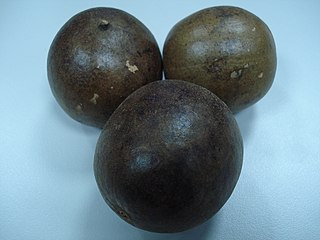
Mangifera is a genus of flowering plants in the cashew family, Anacardiaceae. It contains approximately 69 species, with the best-known being the Common Mango. The center of diversity is in subtropical and tropical South Asia and Southeast Asia, while the highest number of species occur in India. They are generally canopy trees in lowland rainforests, reaching a height of 30–40 m (98–131 ft).

Dendrocalamus is a tropical Asian genus of giant clumping bamboos in the grass family. It is found in the Indian subcontinent, China, and Southeast Asia.
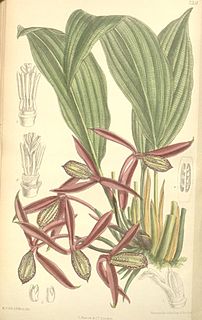
Orchidantha is a genus of flowering plants. In the APG III system, it is placed in the family Lowiaceae, as the sole genus. It includes the plants in the formerly recognised genera Lowia and Protamomum.

Mammea is a flowering plant genus with about 70 species in the family Calophyllaceae. Its members are evergreen trees having edible fruits. The flowers are polygamous, with a unitary calyx opening into two or three valvate sepals. There are 4 to 8 petals. Berries are formed, containing 1 to 4 seeds. The leaves are rigid, coriaceous and often have pellucid dots.

The Siamese crocodile is a small to medium-sized freshwater crocodile native to Indonesia, Brunei, East Malaysia, Laos, Cambodia, Myanmar, Thailand and Vietnam. The species is critically endangered and already extirpated from many regions. Its other common names include Siamese freshwater crocodile, Singapore small-grain, and soft-belly.

Agrostistachys is a plant genus of the family Euphorbiaceae first described as a genus in 1850. It is native to Southeast Asia, New Guinea, India, and Sri Lanka.
- Agrostistachys borneensisBecc. - India, Sri Lanka, Thailand, Vietnam, Malaysia, Borneo, Philippines, Sumatra, New Guinea
- Agrostistachys gaudichaudiiMüll.Arg. - Thailand, Peninsular Malaysia
- Agrostistachys hookeri(Thwaites) Benth. & Hook.f. - Sri Lanka
- Agrostistachys indicaDalzell - India, Sri Lanka, Thailand, Vietnam, Myanmar, Laos, Cambodia, Malaysia, Borneo, Philippines, New Guinea
- Agrostistachys sessilifolia(Kurz) Pax & K.Hoffm. - Peninsular Malaysia, Borneo, Sumatra
- Agrostistachys staminodiataSevilla - Sumatra
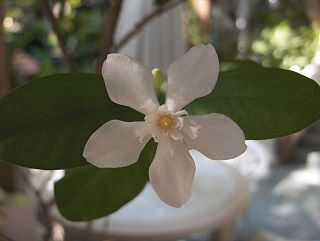
Wrightia is a genus of flowering plants in the Apocynaceae (dogbane) family, first described as a genus in 1810. It native to tropical Africa, China, the Indian Subcontinent, Southeast Asia, Papuasia, and Australia. The species are all small trees or shrubs.
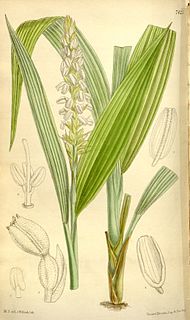
Neuwiedia is a genus of primitive terrestrial orchids, comprising 9 species native to China, Southeast Asia and certain Pacific Islands.
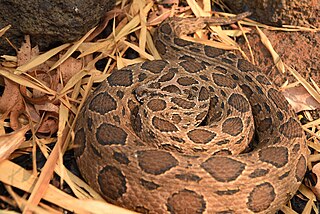
Daboia siamensis is a venomous viper species that is endemic to parts of Southeast Asia, southern China and Taiwan. It was formerly considered to be a subspecies of Daboia russelii, but was elevated to species status in 2007.

Kibatalia is a genus of trees and shrubs in the family Apocynaceae, first described as a genus in 1826. It was initially called Hasseltia, but this turned out to be an illegitimate homonym. So Kibatalia was chosen as a replacement name. Kibatalia is native to China and Southeast Asia.
- Kibatalia arborea(Blume) G.Don – Thailand, Philippines, W Malaysia, Borneo, Sumatra, Java, Sulawesi
- Kibatalia blancoi(Rolfe ex Stapf) Merr. – Philippines
- Kibatalia borneensis(Stapf) Merr. – Sarawak
- Kibatalia elmeriWoodson – Luzon
- Kibatalia gitingensis(Elmer) Woodson – Philippines
- Kibatalia laurifolia(Ridl.) Woodson – Vietnam, Cambodia, Thailand, W Malaysia
- Kibatalia longifoliaMerr. – Mindanao
- Kibatalia macgregori(Elmer) Woodson – Sibuyan
- Kibatalia macrophylla(Pierre ex Hua) Woodson – Yunnan, Indochina
- Kibatalia maingayi(Hook.f.) Woodson – Thailand, W Malaysia, Borneo, Sumatra, Mindanao
- Kibatalia merrillianaWoodson – Leyte, Samar
- Kibatalia puberulaMerr. – Samar in Philippines
- Kibatalia stenopetalaMerr. – Luzon, Dinagat, Mindanao
- Kibatalia villosaRudjiman – W Malaysia, Borneo
- Kibatalia wigmani(Koord.) Merr. – Sulawesi
- Kibatalia africana(Benth.) Merr. =Funtumia africana(Benth.) Stapf
- Kibatalia elastica(Preuss) Merr. = Funtumia elastica(Preuss) Stapf
- Kibatalia latifolia(Stapf) Merr. = Funtumia africana(Benth.) Stapf
- Kibatalia scheffieri(K.Schum.) Merr. = Funtumia africana(Benth.) Stapf
- Kibatalia zenkeri(K.Schum.) Merr. = Funtumia africana(Benth.) Stapf

Tripogon is a genus of tropical and subtropical plants in the grass family. They are widespread across Asia, Africa, Australia, and the Americas. Fiveminute grass is a common name for plants in this genus.
Didymoplexiella is a genus of flowering plants from the orchid family, Orchidaceae. It contains 8 known species native to Southeast Asia, with a few species extending northwards into Japan and southern China. These are mycoheterotropic plants lacking chlorophyll, obtaining nutrients from fungi in the soil.
- Didymoplexiella borneensis(Schltr.) Garay - Sarawak
- Didymoplexiella cinnabarinaTsukaya, M.Nakajima & H.Okada - Kalimantan
- Didymoplexiella denticulataAver. - Laos, Vietnam
- Didymoplexiella forcipata(J.J.Sm.) Garay - Kalimantan
- Didymoplexiella kinabaluensis(Carr) Seidenf. - Sabah
- Didymoplexiella ornata(Ridl.) Garay - Thailand, Vietnam, Malaysia, Borneo, Sumatra
- Didymoplexiella siamensis(Rolfe ex Downie) Seidenf. - Hainan, Taiwan, Japan, Ryukyu Islands, Thailand, Vietnam
- Didymoplexiella trichechus(J.J.Sm.) Garay - Sumatra, Bangka
Argyrophis siamensis, also known as the Siamese blind snake or Thailand worm snake, is a species of snake in the Typhlopidae family.
Diospyros borneensis is a tree in the Ebenaceae family. It grows up to 20 metres (70 ft) tall. Twigs are reddish brown when young, drying black. Inflorescences bear up to 20 flowers. The fruits are round, drying black, up to 4.2 cm (2 in) in diameter. The tree is named for Borneo. Habitat is forests from sea-level to 1,000 metres (3,300 ft) altitude. D. borneensis is found in Peninsular Thailand, Sumatra, Peninsular Malaysia and Borneo.
Toxocarpus is a genus of plants in the Milkweed family, Apocynaceae. It is native to China, the Himalayas, and Southeast Asia.

The gray cat snake, also known as eyed cat snake or Siamese cat snake is a species of catsnake found in northeastern India, Bangladesh, Myanmar, Cambodia, Thailand, Malaysia, and Vietnam.
Iris sikkimensis is a species in the genus Iris, it is also in the subgenus of Iris and in the Pseudoregelia section. It is a rhizomatous perennial, from Sikkim. It has pale green or light green thin leaves, slender stem, 2 or 3 lilac or purple flowers, with a white beard with orange tips. It is thought to be a hybrid of Iris hookeriana and Iris kumaonensis.
Nupserha lenita is a species of beetle in the family Cerambycidae. It was described by Francis Polkinghorne Pascoe in 1867. It is known from Myanmar, India, Thailand, Malaysia, and Vietnam.
The Siamese green-eyed gecko is a species of gecko. It is endemic to Thailand.


